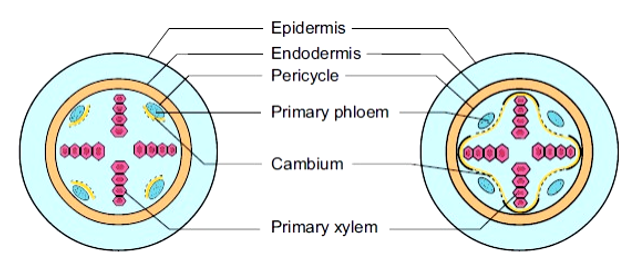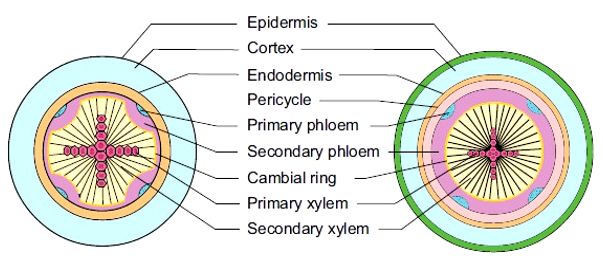- Secondary growth in thickness of root is due to the addition of new tissues by the activity of vascular cambium and cork cambium.
- Monocot roots do not show secondary growth.
- Dicot roots have radial and exarch vascular bundles.
- Conjunctive tissue is present between xylem and phloem.
Activity of Cambium
- The conjunctive tissue becomes meristematic and forms a small strip of cambium just below the primary phloem.
- At the same time, cells of pericycle present outside protoxylem also become meristematic and forms small cambial strips.
- These two cambial strips join together and form a wavy band of cambium.

- The cambial cells below the phloem become active first. It cuts off cells to either side, with more cells on the inner side.
- This causes the phloem and cambium is pushed outwards.
- Hence the wavy cambium gradually becomes a circular cambium.
- Then it forms secondary xylem and phloem tissues.
- But, it does not form any annual rings.

Periderm formation
- The cells of pericycle become meristematic and forms secondary meristems called cork cambium or phellogen.
- These cells cut off phellem towards the outer region and phelloderm towards the inner region.
- These three tissues together form the outer protective layer of a root known as the periderm.